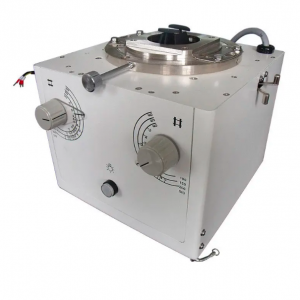When it comes to medical imaging, accuracy and precision are of the essence. An X-ray collimator is one of the key components in an X-ray machine that makes a significant contribution to image quality. A medical X-ray collimator is a device that controls the size and shape of an X-ray beam to ensure that the radiation is focused on a specific area of interest while minimizing exposure to surrounding healthy tissue. In this article, we'll dive into the key considerations and features to keep in mind when choosing the right medical X-ray collimator for your facility.
1. Collimator type:
There are various types of X-ray collimators on the market, each suitable for different application and imaging needs. The most commonly used collimator types include fixed collimators, manual collimators, and motorized collimators. Fixed collimators are fixed and have limited flexibility, while manual collimators can be manually adjusted to control the size and shape of the beam. Motorized collimators, on the other hand, offer the highest degree of precision and automation, allowing for easier and faster adjustments.
2. Collimator field of view size and shape:
The field of view size and shape of the collimator should match the desired imaging requirements. Different medical imaging procedures may require different field sizes. Make sure the collimator you choose provides the necessary field size adjustment and can achieve both rectangular and circular beam shapes to accommodate various imaging techniques.
3. Radiation safety and dose optimization:
One of the main functions of X-ray collimators is to minimize unnecessary radiation exposure of patients and healthcare workers. Therefore, it is critical to choose a collimator that complies with radiation safety regulations and helps optimize dose efficiency. Look for collimators with additional radiation filters and adjustable shutters to further reduce scattered radiation and improve image quality while minimizing dose.
4. Light positioning and alignment:
Collimators equipped with laser positioning and alignment capabilities can significantly improve the accuracy and efficiency of image-guided procedures. A laser guide integrated within the collimator provides a visible contour of the X-ray field, facilitating correct patient positioning and aperture alignment.
5. Ease of use and ergonomics:
Consider the ease of use and ergonomics of your collimator, as it can greatly impact workflow efficiency and user experience. Look for collimators with user-friendly interfaces, intuitive control systems, and ergonomic handles or knobs for smooth adjustments during imaging. Not only does this increase productivity, it also minimizes the risk of operator error.
6. Compatibility and integration:
Make sure the selected collimator is compatible with your existing X-ray machine and imaging system. The collimator should integrate seamlessly with the device without compromising overall performance. Please consult the manufacturer or supplier to verify compatibility and potential custom requirements.
In summary, choosing the right medical X-ray collimator is critical for accurate, high-quality medical imaging. When evaluating collimator options, consider your facility's specific requirements, budget, and imaging technology. By carefully considering collimator type, field size and shape, radiation safety, light positioning, ease of use, and compatibility, you can ensure informed decisions that suit your facility's needs and deliver accurate imaging results.
Post time: Aug-21-2023



